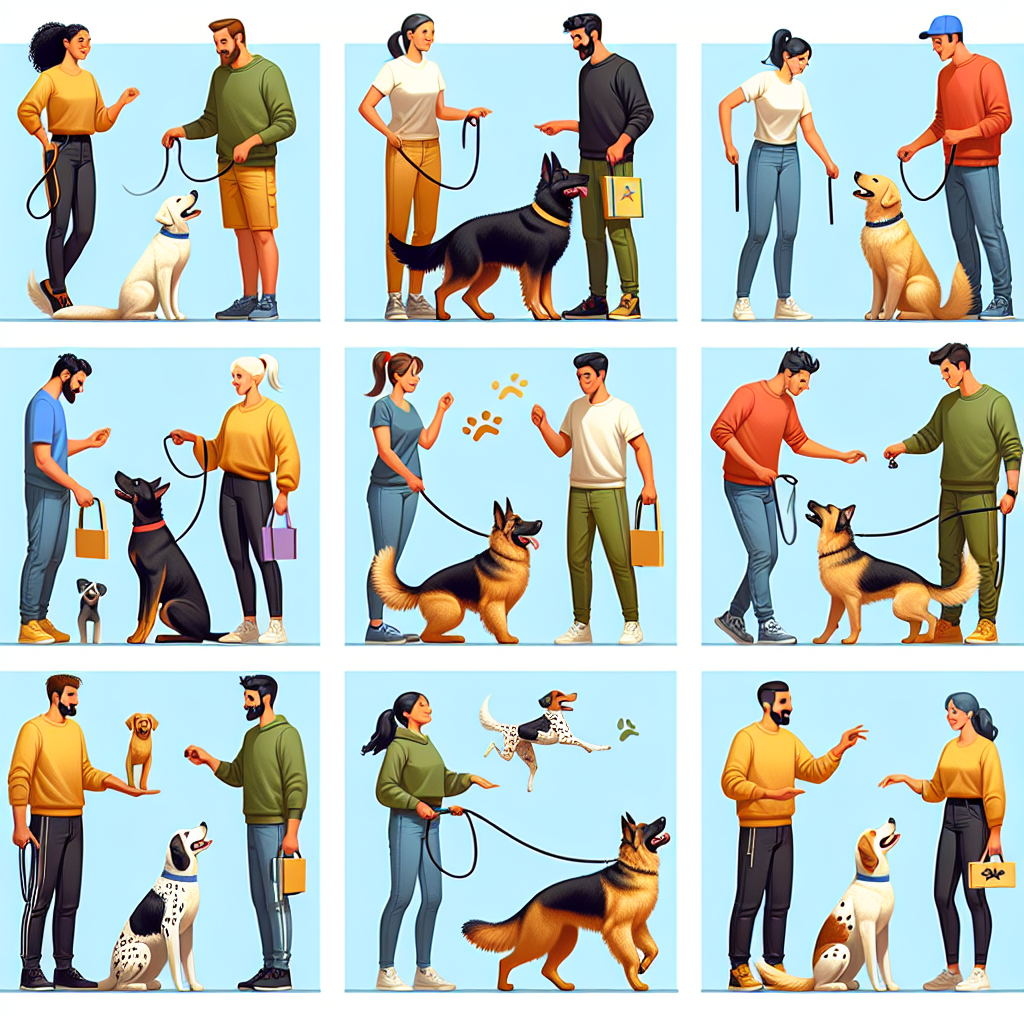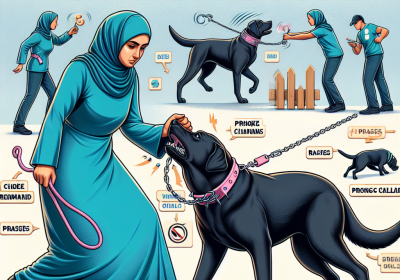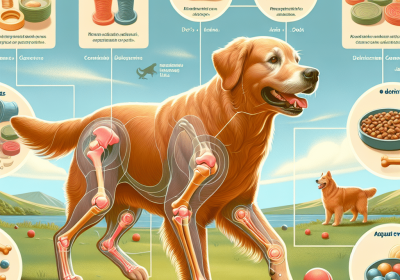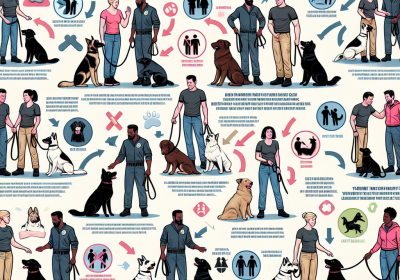Incorporating Canine Freework in Regular Training Sessions
Table of Contents
- Benefits Of Integrating Canine Freework Into Daily Training Routines
- Step-By-Step Guide To Incorporating Canine Freework In Training Sessions
- Common Mistakes To Avoid When Using Canine Freework In Training
Incorporating Canine Freework in regular training sessions offers a holistic approach to dog training that emphasizes mental stimulation, physical exercise, and emotional well-being. Canine Freework, a concept developed by Sarah Fisher, focuses on allowing dogs to explore their environment freely, engage their senses, and make choices, thereby fostering confidence and reducing stress. By integrating Freework into traditional training routines, handlers can create a more enriching and balanced experience for their dogs. This method not only enhances the dog’s problem-solving skills and adaptability but also strengthens the bond between the dog and the handler. Through a combination of structured activities and unstructured exploration, Canine Freework promotes a well-rounded development, making it a valuable addition to any training regimen.
Benefits Of Integrating Canine Freework Into Daily Training Routines
Incorporating Canine Freework into regular training sessions offers a multitude of benefits that can significantly enhance the overall well-being and performance of dogs. This innovative approach to canine training emphasizes the importance of allowing dogs to explore their environment freely, thereby fostering a more holistic development. By integrating Freework into daily routines, trainers and pet owners can create a more enriching and balanced training experience for their canine companions.
One of the primary benefits of Canine Freework is its ability to reduce stress and anxiety in dogs. Traditional training methods often involve structured commands and repetitive tasks, which can sometimes lead to frustration and stress. In contrast, Freework encourages dogs to engage with their surroundings at their own pace, promoting a sense of autonomy and relaxation. This reduction in stress is particularly beneficial for dogs with anxiety issues or those who are easily overwhelmed by conventional training techniques.
Moreover, Canine Freework enhances a dog’s problem-solving skills and cognitive abilities. By allowing dogs to explore and interact with various objects and environments, they are given the opportunity to think independently and make decisions. This mental stimulation is crucial for their cognitive development and can lead to improved focus and learning capabilities during more structured training sessions. Consequently, dogs that regularly engage in Freework are often more adaptable and better equipped to handle new challenges.
In addition to cognitive benefits, Canine Freework also promotes physical health and fitness. The unstructured nature of Freework encourages dogs to move in diverse ways, utilizing different muscle groups and improving overall physical conditioning. This varied physical activity can help prevent injuries and maintain a healthy weight, contributing to a longer and healthier life for the dog. Furthermore, the physical exercise involved in Freework can be particularly advantageous for high-energy breeds that require more extensive physical outlets.
Another significant advantage of integrating Canine Freework into daily training routines is the strengthening of the human-animal bond. When dogs are given the freedom to explore and express themselves, they often develop a deeper trust and connection with their handlers. This enhanced bond can lead to more effective communication and cooperation during training sessions, as the dog feels more secure and understood. Additionally, the shared experience of Freework can be a joyful and rewarding activity for both the dog and the handler, fostering a positive and supportive training environment.
Furthermore, Canine Freework can be tailored to suit the individual needs and preferences of each dog. This flexibility allows trainers to address specific behavioral issues or training goals in a more personalized manner. For instance, a dog that is fearful of certain objects or environments can gradually build confidence through controlled Freework exercises. Similarly, dogs with specific training objectives, such as agility or scent work, can benefit from targeted Freework activities that enhance relevant skills.
In conclusion, the integration of Canine Freework into regular training sessions offers a comprehensive approach to canine development that addresses both mental and physical well-being. By reducing stress, enhancing cognitive abilities, promoting physical fitness, strengthening the human-animal bond, and providing tailored training experiences, Freework presents a valuable addition to traditional training methods. As more trainers and pet owners recognize the benefits of this approach, Canine Freework is likely to become an increasingly popular and effective tool in the pursuit of well-rounded and happy dogs.
Step-By-Step Guide To Incorporating Canine Freework In Training Sessions

Incorporating Canine Freework in regular training sessions can significantly enhance a dog’s physical and mental well-being. This innovative approach, which emphasizes allowing dogs to explore their environment freely, can be seamlessly integrated into existing training routines. To begin with, it is essential to understand the fundamental principles of Canine Freework. This method encourages dogs to engage with their surroundings at their own pace, promoting natural behaviors and reducing stress. By providing a variety of stimuli, such as different textures, scents, and objects, dogs can develop confidence and problem-solving skills.
The first step in incorporating Canine Freework into training sessions is to create a safe and stimulating environment. This can be achieved by selecting an area that is free from hazards and distractions. It is beneficial to include a range of items that can pique the dog’s curiosity, such as different types of surfaces, toys, and scent trails. By doing so, the dog is encouraged to explore and interact with the environment, which can lead to a more enriching experience.
Once the environment is set up, it is important to allow the dog to take the lead. Unlike traditional training methods that often involve direct commands and structured activities, Canine Freework focuses on giving the dog autonomy. This means observing the dog’s behavior and allowing them to investigate at their own pace. During this time, it is crucial to remain patient and avoid interrupting the dog’s exploration. This approach not only fosters independence but also helps build trust between the dog and the handler.
As the dog becomes more comfortable with the environment, it is possible to gradually introduce more complex stimuli. For instance, adding puzzle toys or scent games can challenge the dog’s cognitive abilities and keep them engaged. It is important to monitor the dog’s reactions and adjust the level of difficulty accordingly. If the dog appears overwhelmed or disinterested, it may be necessary to simplify the tasks or provide additional encouragement.
Incorporating Canine Freework into regular training sessions also involves balancing free exploration with structured activities. While it is beneficial to allow the dog to explore independently, it is equally important to integrate traditional training exercises. This can be done by alternating between periods of freework and more conventional training tasks, such as obedience commands or agility drills. By doing so, the dog can enjoy the benefits of both approaches, leading to a more well-rounded training experience.
Furthermore, it is essential to consider the individual needs and preferences of each dog. Some dogs may require more time to adjust to the concept of freework, while others may take to it more readily. It is important to tailor the sessions to suit the dog’s personality and learning style. This personalized approach can help maximize the effectiveness of the training and ensure that the dog remains motivated and engaged.
In conclusion, incorporating Canine Freework into regular training sessions can offer numerous benefits for both dogs and handlers. By creating a stimulating environment, allowing the dog to take the lead, and balancing free exploration with structured activities, it is possible to enhance the dog’s physical and mental well-being. This method not only promotes natural behaviors and reduces stress but also fosters independence and builds trust. With patience and careful observation, Canine Freework can be seamlessly integrated into existing training routines, leading to a more enriching and effective training experience.
Common Mistakes To Avoid When Using Canine Freework In Training
Incorporating Canine Freework into regular training sessions can be a highly beneficial practice, offering dogs the opportunity to engage in natural behaviors and explore their environment in a controlled manner. However, there are common mistakes that trainers and pet owners often make when integrating this technique, which can undermine its effectiveness and potentially lead to undesirable outcomes. Understanding these pitfalls and how to avoid them is crucial for maximizing the benefits of Canine Freework.
One prevalent mistake is failing to provide a sufficiently varied environment. Canine Freework thrives on diversity, as it allows dogs to encounter different textures, scents, and objects. A monotonous setting can quickly become uninteresting, reducing the dog’s engagement and the overall effectiveness of the session. To avoid this, trainers should regularly change the layout and elements within the Freework area, ensuring that each session offers new stimuli and challenges.
Another common error is neglecting to observe and interpret the dog’s body language. Canine Freework is not just about letting the dog roam freely; it requires careful observation to understand how the dog is interacting with the environment. Misreading or ignoring signs of stress, anxiety, or overexcitement can lead to negative experiences for the dog. Trainers should be well-versed in canine body language, recognizing when a dog is comfortable and when it might need a break or a change in the environment.
Additionally, some trainers make the mistake of using Canine Freework as a standalone activity rather than integrating it into a broader training regimen. While Freework is valuable, it should complement other training methods rather than replace them. Incorporating Freework into a balanced training program ensures that the dog benefits from a well-rounded approach, addressing various aspects of behavior, obedience, and mental stimulation.
Overlooking the importance of safety is another critical mistake. The environment used for Canine Freework must be secure and free from hazards that could harm the dog. This includes checking for sharp objects, toxic plants, or small items that could be swallowed. Ensuring that the area is enclosed and escape-proof is also essential to prevent the dog from wandering off or encountering dangerous situations.
Furthermore, some trainers may inadvertently apply too much pressure or control during Freework sessions. The essence of Canine Freework lies in allowing the dog to make choices and explore independently. Excessive intervention can stifle this autonomy, reducing the dog’s confidence and enjoyment. Trainers should strike a balance between providing guidance and allowing the dog to lead the exploration, stepping in only when necessary to ensure safety or redirect inappropriate behavior.
Lastly, inconsistency in the application of Canine Freework can diminish its effectiveness. Regular and consistent sessions are key to reaping the full benefits of this training method. Sporadic or infrequent sessions may not provide the dog with enough opportunities to develop and refine its natural behaviors. Establishing a routine that incorporates Freework on a regular basis helps reinforce positive experiences and supports the dog’s overall development.
In conclusion, while Canine Freework offers numerous advantages for enhancing a dog’s training and well-being, it is essential to avoid common mistakes that can hinder its success. By providing a varied environment, observing the dog’s body language, integrating Freework into a comprehensive training program, ensuring safety, allowing autonomy, and maintaining consistency, trainers can effectively harness the potential of Canine Freework. This thoughtful approach not only enriches the dog’s experience but also fosters a deeper bond between the dog and its handler, ultimately leading to more successful training outcomes.
Read more about Canine Freework
Training Strategies for Canine Freework
– Positive Reinforcement Techniques for Canine Freework
– Building a Strong Foundation for Canine Freework Training
– Common Training Mistakes to Avoid in Canine Freework
– Adjusting Training Methods for Different Types of Dogs
– Incorporating Canine Freework in Regular Training Sessions






![The Dog Podcast Uncovers Startling Truths About What We Feed Our Dogs [Press Release]](https://knowledgenook.com.au/wp-content/uploads/2024/08/dog-with-nutritious-food-400x280.jpg)


